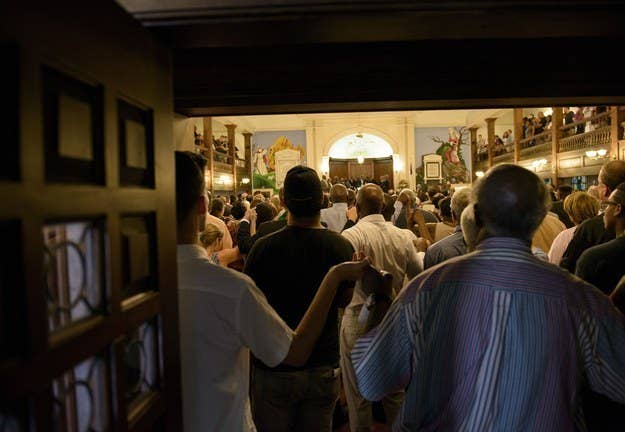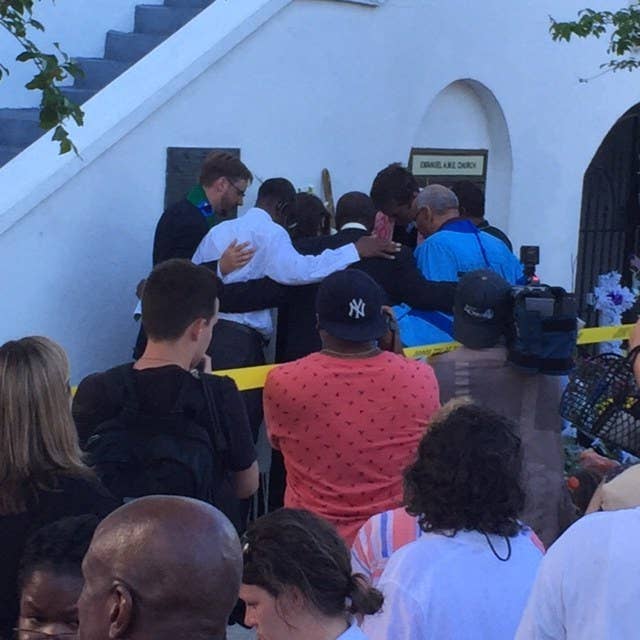
CHARLESTON, South Carolina — They said the shooting would bring the community together.
On Thursday, hundreds of visitors had jammed into the old wooden pews and rafters and even an overflow room of Morris Brown African Methodist Episcopal Church. Political dignitaries like Gov. Nikki Haley, Charleston Mayor Joe Riley, and U.S. Sen. Tim Scott, among many others, had come to offer hope and encouragement to a community in dire need of it.
The day before, and only a few blocks away in downtown Charleston, nine people had been shot and killed in the basement of the nearby historic Emanuel AME Church — the place where Morris Brown's founders had gotten their start.
"He was hoping to divide our state and country," Haley told the church, referring to the shooter. "But all he's going to do is bring us closer."
But once the vigil came to a close and the sanctuary was empty, the handful of Morris Brown members had already moved past those promises. They wondered if, instead, Wednesday's massacre was a tipping point in a decades-long demographic shift in the surrounding communities driven by an exodus of local black residents who can no longer afford to live there.
The shooter's attack "was devastating," said Kathy Heyward, a member of the church since 1975 and the youth program director. "You can already see the changes around here. We do everything [in this community] through the church."
Church leaders hoped their moment in the national spotlight would remind everyone of the importance of black churches to the neighborhood, as economic forces — generally referred to as "gentrification" — have pushed out many of their members and neighbors in favor of younger, whiter and wealthier residents.
At Dave's Carry-Out, only a couple blocks away from Morris Brown AME, Terry McCray has watched the changes from behind the counter of his mother's restaurant.
"Ten years ago, this entire neighborhood as all African-American," said McCray, 44. "Now we've lost it. The handwriting is on the wall." He nodded in the direction of the door, as two young white women strolled down the street in front of the restaurant.
"Once upon a time," he said, "you'd never see something like that over here."
The black population on the Charleston peninsula has been halved over the past 30 years, according to a report last year in the hometown Post and Courier newspaper. The drop was so dramatic, the report said, that whites became the majority on the peninsula for the first time in 60 years.
"The number of black families here has decreased greatly," said Julius Scott, a member of Morris Brown for more than 30 years. "A lot of the older people in this church were raised in the general area. But then their kids came along, couldn't afford it, and now they're renting out their homes to college kids."

Today, the streets of Charleston's inner-city neighborhoods are lined with colorful double gallery homes and townhouses — many of them recently refurbished, swanky restaurants, and trendy boutique shops. Students from the nearby College of Charleston ride their bikes along the narrow, tree-canopied streets. The port city vibe, along with a constant stream of sun-burned and sweaty tourists, gives Charleston more than a passing resemblance to New Orleans.
It's not much of a surprise that Charleston has been named a "Top U.S. City" destination by Conde Nast Traveler for four consecutive years.
But that has meant a drastic shift for the city's black residents, who have been steadily replaced by student renters, real estate developers, and young professionals. It doesn't much resemble the area where Emanuel AME — referred to as "Mother Emanuel" by neighboring churches because of its age and prominence in the city — once served as the hub of a bustling black neighborhood.
Instead, only churches like Emanuel, Morris Brown, and Citadel Square, and a relative handful of black residents have managed to hold on to their properties in the changing landscape.
CityLab has also reported that downtown residents — black and white — have been fighting back against private developer plans to build luxury homes in a park "that has been central to civil rights history."
Residents say the battle to preserve the neighborhood has played out quietly, and over many years. However, most of those efforts have failed.
About a quarter-mile east of Emanuel AME, the corner of Calhoun and East Bay streets offers a glimpse into the ongoing tension between preservation and development on the peninsula.
A new luxury condo development shares a plot on the former grounds of The Borough Houses, once the site of a complex that housed 160 black families dating back to the 1940s. Today, all that's left of the Borough Houses are a pair of two-story white clapboard homes.
"The structures were vacated in 1992 upon discovery of toxic waste deposits in the soil," reads a sign explaining the historic nature of the property, which is still partly owned by the sons of the original owner. "Their demolition the following year regrettably erased a significant piece of history relevant to Charleston's black community.
The inscription describes the remaining two houses as "last vestiges of The Borough," structures that "have steadfastly resisted gentrification."
Around the corner from Emanuel AME, a 65-year-old black man sat on the porch of his old pink double gallery home taking a drag on a cigarette. He said he constantly finds leaflets from developers begging him to sell his home, which has been in his family for nearly 50 years.
"They're trying to buy up everything," he said, declining to give his name. Asked what he predicted the area would look like in a few years, he paused. Then he smiled. "Probably all white."

